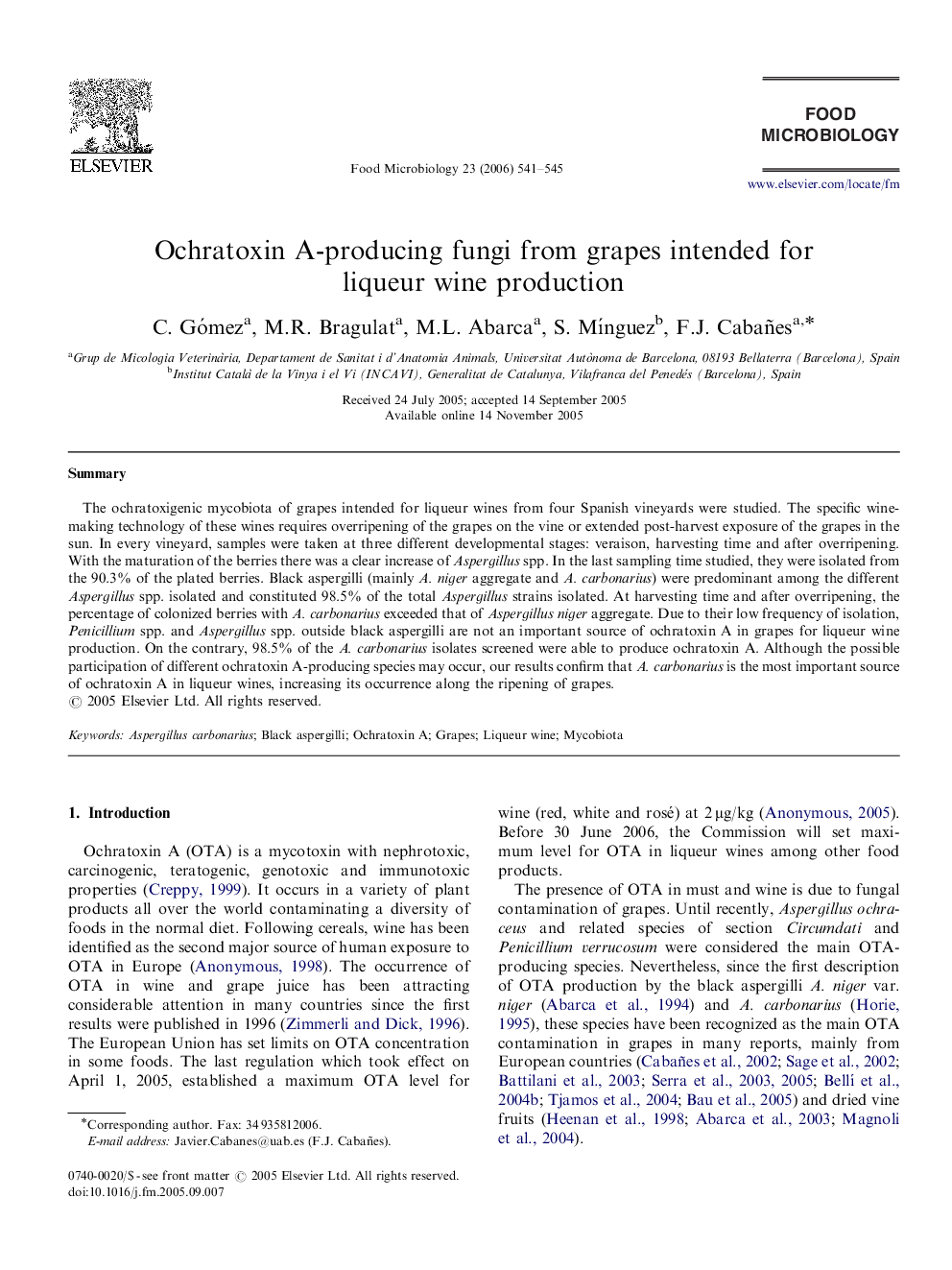| Article ID | Journal | Published Year | Pages | File Type |
|---|---|---|---|---|
| 4363928 | Food Microbiology | 2006 | 5 Pages |
Abstract
The ochratoxigenic mycobiota of grapes intended for liqueur wines from four Spanish vineyards were studied. The specific wine-making technology of these wines requires overripening of the grapes on the vine or extended post-harvest exposure of the grapes in the sun. In every vineyard, samples were taken at three different developmental stages: veraison, harvesting time and after overripening. With the maturation of the berries there was a clear increase of Aspergillus spp. In the last sampling time studied, they were isolated from the 90.3% of the plated berries. Black aspergilli (mainly A. niger aggregate and A. carbonarius) were predominant among the different Aspergillus spp. isolated and constituted 98.5% of the total Aspergillus strains isolated. At harvesting time and after overripening, the percentage of colonized berries with A. carbonarius exceeded that of Aspergillus niger aggregate. Due to their low frequency of isolation, Penicillium spp. and Aspergillus spp. outside black aspergilli are not an important source of ochratoxin A in grapes for liqueur wine production. On the contrary, 98.5% of the A. carbonarius isolates screened were able to produce ochratoxin A. Although the possible participation of different ochratoxin A-producing species may occur, our results confirm that A. carbonarius is the most important source of ochratoxin A in liqueur wines, increasing its occurrence along the ripening of grapes.
Related Topics
Life Sciences
Agricultural and Biological Sciences
Food Science
Authors
C. Gómez, M.R. Bragulat, M.L. Abarca, S. MÃnguez, F.J. Cabañes,
